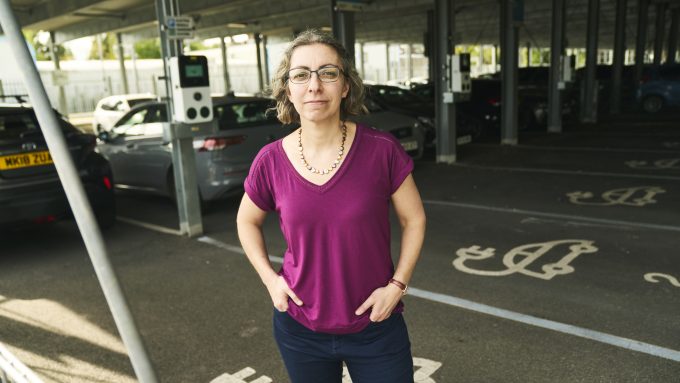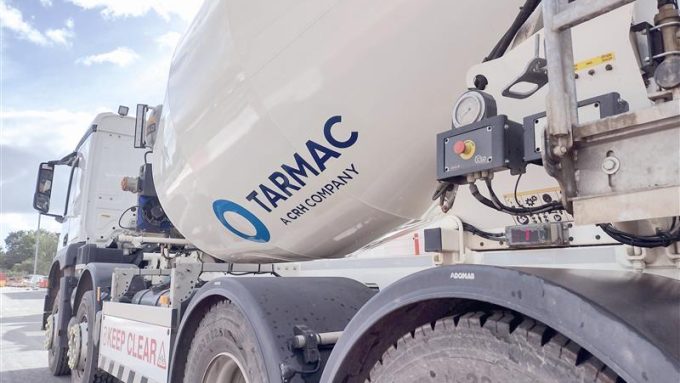
Meet the innovator making roads smoother

“Our road network is ageing and its condition is getting worse, so we need to shift away from reactive towards preventative maintenance,” remarks Paolo Paoletti, a robotics specialist who pivoted his technical focus away from healthcare and towards highways.
“At the moment, most cracks in the roads don't get recorded because we don't have the funding or the labour to send crews to fix them. Many cracks left untreated become potholes, so we want to fix them early. Automation is the solution.”Paolo Paoletti, Robotiz3d
The first product called ARRES EYE – developed alongside colleagues at Robotiz3d, a spin-out from the University of Liverpool that Paolo co-founded in 2020 – automatically detects road defects using a compact sensor. It can be retrofitted to any vehicle used for laser scanning the surface for defects that could become more serious if left untreated, without human intervention.
Artificial intelligence developed by Robotiz3d accurately identifies road defects and classifies them. Each defect’s exact dimensions are logged and their precise location mapped, and the system determines whether the fault is serious enough to warrant immediate attention.
Robotiz3d is also developing an autonomous vehicle called ARRES PREVENT to administer repair material to seal a defect. This autonomous crack sealing robot has attracted interest from around the world from authorities looking for an efficient means of preventing minor defects from evolving into potholes.
“Highways can be a relatively conservative sector, but we have worked with great collaborators such as Hertfordshire County Council and its contractor Ringway, who had the vision to move towards more proactive maintenance,” Paolo says. “They helped us with our development direction and initial trials.
“Our end vision is for the robot to do everything itself, from detecting defects and sealing cracks to repairing potholes. But that will require legislative change to allow for autonomous driving,” he adds.

Paolo and his colleagues have been supported twice by the Transport Research and Innovation Grants (TRIG) programme, delivered by Connected Places Catapult on behalf of the Department for Transport.
“These grants allowed us to explore the feasibility of what we had in mind, and showcase it to investors” says Paolo. “Both of our interactions with TRIG and the support of Connected Places Catapult have been instrumental to our success as a young company.”
Inspired by his family’s electronics shop
Paolo has been interested in technology for as long as he can remember. He grew up in Florence in Italy where his father still owns an electronics shop (now run by his sister) and studied electronics and automation while still at school.
With fortunate timing, when Paolo turned 18 the local university began offering Automation Engineering as a course, so he enrolled; later completing a Batchelor Degree and a Masters in the subject.
He was asked to consider working towards a PhD so studied atomic force microscopy at Florence University, and spent several months at Harvard University as a visiting PhD student. He returned to Italy as a researcher at the National Research Institute before moving to Harvard as a post-doctoral research fellow.
While in the US, Paolo performed research in an applied mathematics group, and started looking at the biomechanics of animals and humans; understanding how they balance and move, which got him into robotics.
He moved to the UK in 2012, securing a lectureship position at the University of Liverpool. “From then on my adventure with robotics began,” he explains.
“Before moving to Liverpool, I was quite a theoretical academic and had never stepped into a laboratory, but now I do very practical work.”
Paolo founded its School of Engineering robotics lab where he specialised in the development of ‘swarm robotics’ where many robots co-ordinate with each other. He also began to develop devices to help improve mobility among some NHS patients.
One of his aims was to help design prosthetic limbs and assisted devices to help people who have suffered a stroke to open their hands.
But he decided not to pursue opportunities in the sector due in part, he says, because the UK “is far behind” the US and South Korea in the application of the technology for healthcare.

Moving from health to highways
Paolo pivoted his focus to road transport and – alongside colleagues Lisa Layzell and Sebastiano Fichera – decided to enter the industrial world in 2020, creating spin-out company Robotiz3d to focus on developing technology for data-driven and automated road maintenance.
“Since then, we have been on quite an interesting journey, in terms of translating what started as a very simple concept into a real product that can be put to the market,” he says.
The company focused on looking closely at road defects and repairs, and is also in discussion with airports looking at using its technology to detect foreign objects that may pose hazards on runways.
Paolo says that robotics “has huge potential to shape our society in the future. But on a more personal level, I like robotics because it's a lot of fun.
“There are so many aspects you need to think about when designing a robot; from the mechanics to the control, to the software to the sensing, and how they are going to move,” he adds. “They are all interconnected and make it very stimulating from an intellectual point of view. Making a robot come to life gives me a lot of satisfaction.”
Find out more about the Transport Research & Innovation Grants programme.





